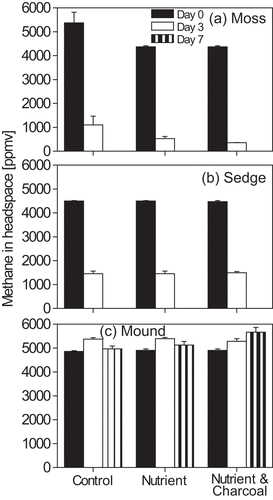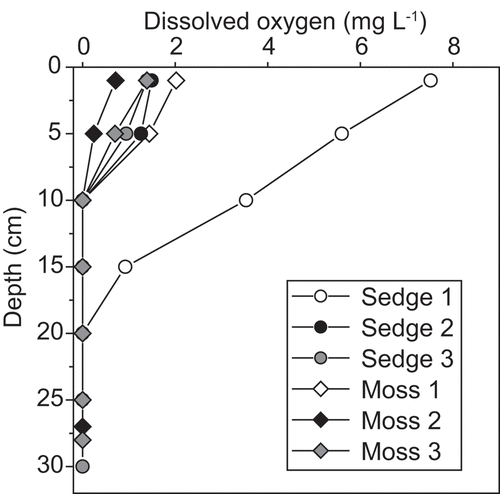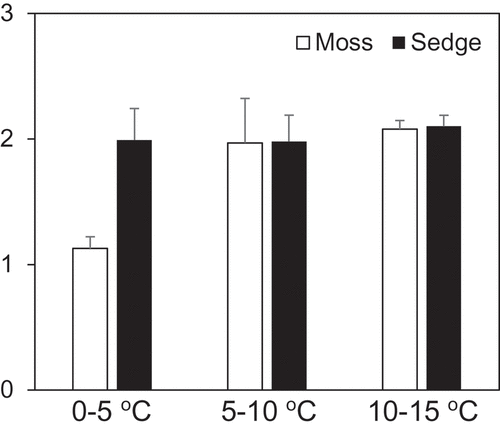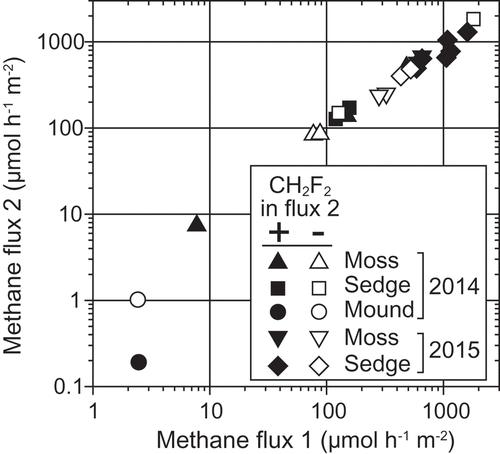Figures & data
Table 1. Summary of samples used and experimental setup
Figure 1. Temporal change of methane concentration in the headspace of the microcosms with soil samples collected from the different vegetation types in 2012 (a, moss; b; sedge; c, moss in the mound) treated with inorganic nutrient and black carbon. Bars indicate the standard error (n = 3)

Table 2. Estimated potential methane oxidation rate of soil samples from the wetlands of northeastern Siberia (average ± std error, n = 3)
Figure 2. Methane oxidation by the different depth layers of moss- and sedge- dominated soils in 2013 (a and b) and 2015 (c and d). Bars indicate the standard error (n = 3)

Figure 3. Vertical profile of dissolved oxygen in pore water of the wetland soils. Three independent measurements for sedge- and moss-dominated wetlands were done at the study site in 2014

Figure 4. Effect of incubation temperature on methane oxidation by (a) moss and (b) sedge-dominated peat samples and (c) the temperature dependence of the methane oxidation rate (0–10 cm) (2014). Bars indicate the standard error (n = 3). Data marked with different letters are significantly different (P < 0.05, as determined by Tukey’s honestly significant difference test)



